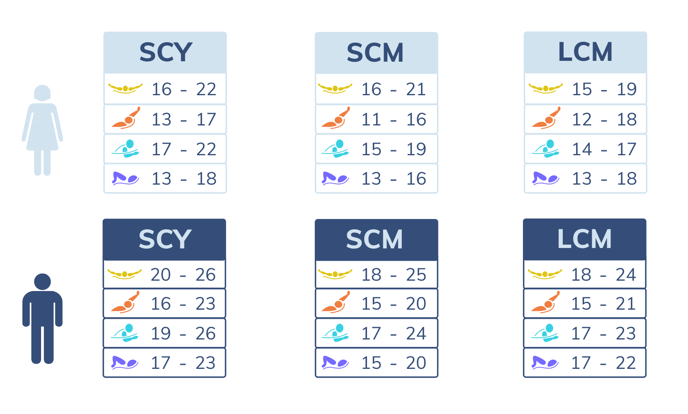Push Strength
How is Push Strength measured, what to look for in a good push-off, and how to improve the strength produced.
What is Push Strength?
Push Strength, or Push-Off Strength, is an Index of accumulated total acceleration during the push-off. It is the fastest point during any length, and every effort put forth by the swimmer for the duration of the length is to retain as much of that speed as possible.
How is it measured?
Push-off Strength is measured by the speed of the swimmer upon leaving the wall. This value has no upper bound, but most swimmers won’t see values higher than 40. There is no unit of measure for push Strength.
What is a good Push Strength?
A high Push-Off Strength means that the swimmer is going faster and farther off the wall.
A strong, sustained push, with good streamlined coming off the wall is key to a powerful push-off. While the turn is not accounted for in the calculation of this metric, a properly executed turn is the perfect set-up for a strong push-off.
The momentum built from the push-off helps maximize Time Underwater and leads to a powerful breakout, which can ultimately shave off crucial seconds in overall time.
Typical Values Chart
Below is a chart that shows the average range swimmers in our database see for push strength. Check where you fall for your preferred stroke and pool length combinations.

How to improve Push Strength?
Here are a few tips and tricks:
- If the Stroke Count coming into the turn is high, and the push-off force is higher than expected, it may indicate the swimmer is turning too late or taking too many strokes into the turn.
- A swimmer with a high Turn Rate (fast turn) may also have really short push-offs, which by extension returns a lower Push Strength value than if they spent more time on the wall with the same force. This doesn’t necessarily require correction unless Time Underwater seems low as well.
- If the number is still lower than expected, it may be due to inconsistent push-off strength throughout the turn. In this case, the swimmer should focus on applying consistent pressure against the wall the entire time they are on it.
